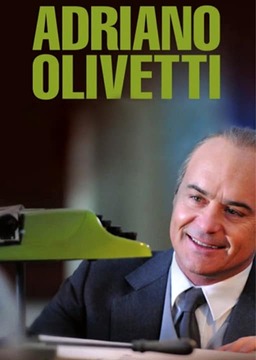




Difficulty:
 Intermediate
Intermediate
Italy
Rita Levi Montalcini talks about when she won the Nobel Prize in 1986. Her niece, Piera, tells the story from her point of view, and Paola Tarassi, a research student of hers, tells about studying with her after she had already won the Nobel.
Difficulty:
 Intermediate
Intermediate
Italy
Comedian and actor Caterina Guzzanti is a guest at a middle school in Afragola, in the province of Naples, a school named after Rita Levi Montalcini. Guzzanti meets with the students from the theater class for a lesson on the imagination, which has a lot of importance in her work but was also very important to the great researcher from Turin, Montalcini.
Difficulty:
 Intermediate
Intermediate
Italy
In August of 2014, the European Space Agency Rosetta probe reached the comet 67/P. This mission allowed for the collection of a great deal of data about comets. In fact, in this episode, a comet will be fashioned out of fairly common ingredients in a normal kitchen. That's pretty exciting.
Difficulty:
 Intermediate
Intermediate
Italy
This segment talks about the difference between an asteroid and a comet. Important work is being done with the Hera and Dart missions to study how to deviate an asteroid, thus avoiding possible great damage to our beloved planet
Difficulty:
 Intermediate
Intermediate
Italy
This segment is all about so-called "Near-Earth Objects," called "NEOs" for short. They are comets, asteroids, metors and man-made objects, as well. What have they done in the past, and what might they do in the future?
Difficulty:
 Intermediate
Intermediate
Italy
Astronaut Luca Parmitano talks to us from the Columbus European Space Laboratory. He explains why tadpoles can help us learn a lot about the weightless conditions of outer space.
Difficulty:
 Intermediate
Intermediate
Italy
A simple experiment with a bicycle pump shows us how rocket launchers work. Even though rockets were invented for war and for fireworks, they are also used for peaceful purposes.
Difficulty:
 Intermediate
Intermediate
Italy
Observing what happens when the air comes out of a balloon will help us understand how the launcher of a spacecraft works. An electrical propulsion engineer from ESA explains about different kinds of propulsion used in space exploration.
Difficulty:
 Intermediate
Intermediate
Italy
To reach outer space, the force of gravity has to be overcome, and that requires a certain "escape" velocity. That's where launchers come in.
Difficulty:
 Intermediate
Intermediate
Italy
One way to tell if there might be life on another planet is through light. Special telescopes, by way of prisms, analyze and break down the light from distant galaxies into parts. Luca Parmitano, an astronaut of the European Space Agency, speaks to us from the Columbus International Space Station.
Difficulty:
 Intermediate
Intermediate
Italy
Luisella Giulicchi, the system manager for the ESA Copernicus Sentinel six mission, explains what an exoplanet is. Two young researchers do a simple experiment to show us how infrared rays work.
Difficulty:
 Intermediate
Intermediate
Italy
Luisella Giulicchi, manager of the European Space Agency ESA, answers questions about light, infrared rays, and lightyears.
Difficulty:
 Intermediate
Intermediate
Italy
What is light? We use it every day, but where does it actually come from? The host suggests doing a little experiment. See if you can follow the instructions in Italian and try it yourself.
Difficulty:
 Intermediate
Intermediate
Italy
The Columbus laboratory is the first permanent European research facility in space. There, astronauts carry out experiments and applications in space science, Earth observation and technology. Columbus offers European scientists full access to a weightless environment that cannot possibly be duplicated on Earth.
Difficulty:
 Intermediate
Intermediate
Italy
Some simple experiments with various materials help us understand what goes into planning the construction of a spacecraft. And then we wonder how we would go about making a planet inhabitable to humans.
Are you sure you want to delete this comment? You will not be able to recover it.